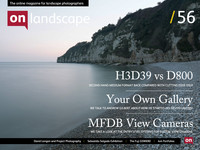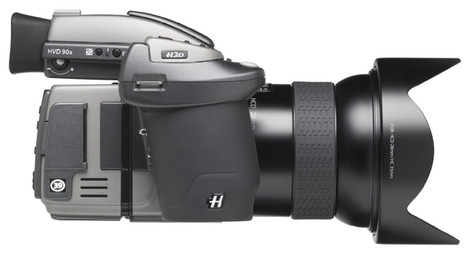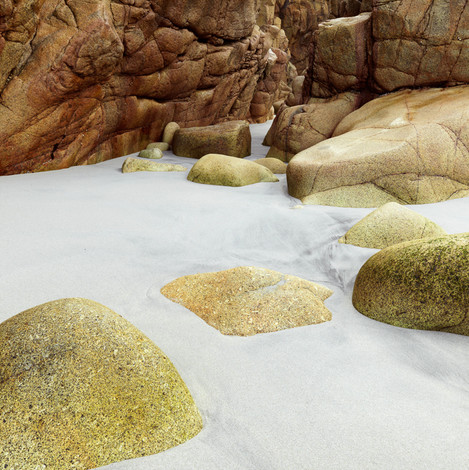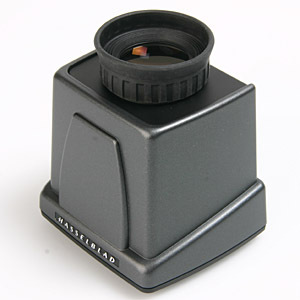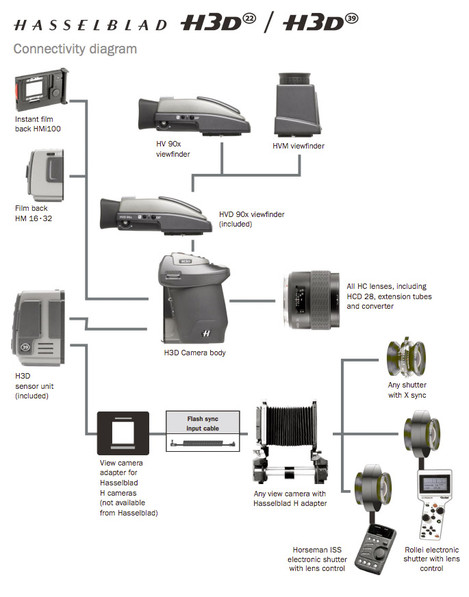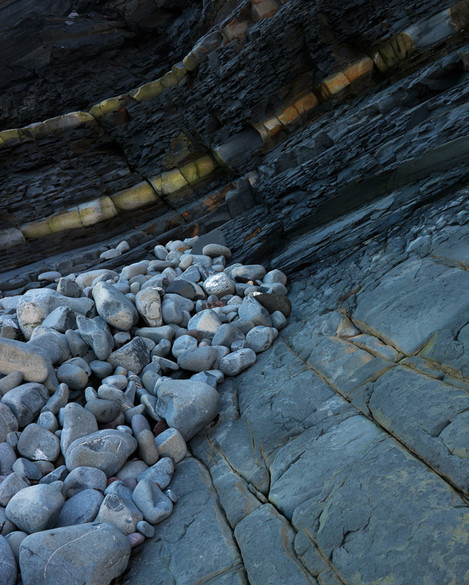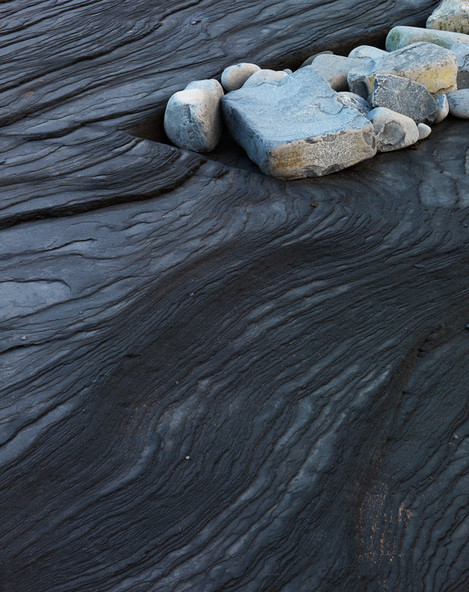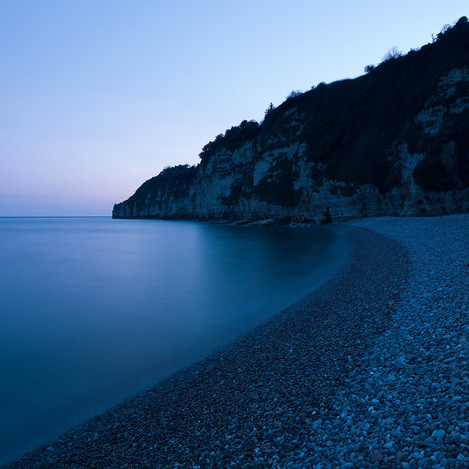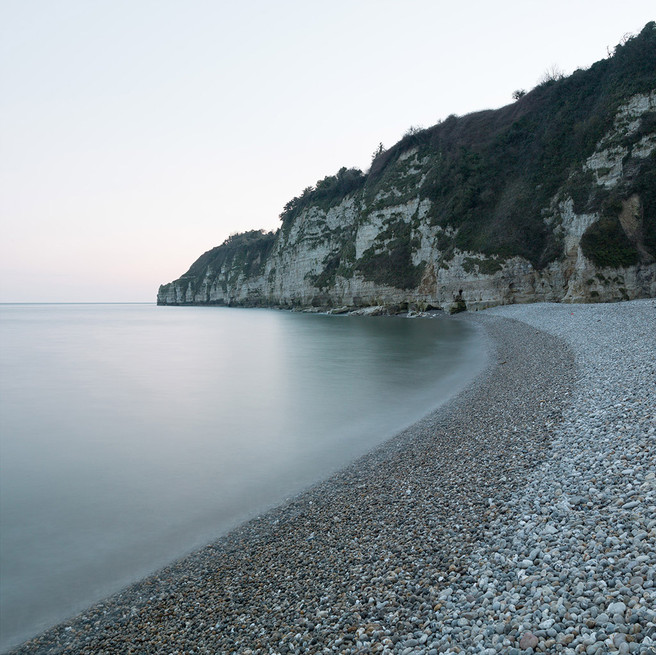Part Three

Andrew Nadolski
Andrew Nadolski is a professional designer and photographer based in Exeter. His series 'The End of the Land' has been exhibited in museums and art galleries across England and has been published as a book by Headon House.
It is interesting to point out that if you visit out the ‘Medium Format digital’ section on Getdpi.com you will see it is subtitled with the Dante quote "Abandon Hope All Ye Who Enter Here." The words ‘crippling depreciation’ are ones that quite happily sit aside ‘medium format digital’. New MFD systems as we will call them are more expensive than a good car and depreciate at an even greater rate!
The top of the range Hasselblad H5D-60 has a list price of £26,394 inc VAT - if you want a new 80mm standard lens you will need to find another £2,154.00. Now I am sure there is some ‘wriggle room’ on prices - it just depends on how good your negotiating skills are. If we consider the car analogy - (you lose 20% the minute you drive off the forecourt) luxury, higher spec cars depreciate at a greater rate than a budget, smaller models. So if you let the pro studio photographers take the financial hit it is possible to reap the rewards at their (literal) expense. As each new model comes out the older backs start to look a lot more affordable. To put things in perspective my ‘elderly’ Hasselblad H3D-39 is probably worth not much more than £3,500 including lens and with this in mind it makes comparing it to the D800 a more realistic test for our readers than a camera costing nearly £30k .
Alongside the D800 the Hasselblad does feel like a bit of a ‘digital dinosaur’ and the experience for me is a bit more like shooting with film. If you bear with me I will explain myself - the H system camera body hasn’t changed much since its introduction and there is good reason for that as for an MF camera the ergonomics are rather good. One battery powers both camera and digital back and these are compact enough and affordable enough to carry spares in the field (battery life is actually very good). The Hasselblad designed/Fuji built lenses are all superb with integrated leaf shutters. The screen on the digital backs have improved a lot since my H3D was ‘king of the mountain’ though it must be said Hasselblad are lagging behind Phase’s IQ backs. The screen on my Hasselblad is frankly laughable compared to that of the D800 or in fact any compact camera available today at any price. For checking composition focus accuracy etc it is useless but once you accept its limitations it is possible to work with it in a workflow that is more ‘film like’. When I shoot film, which I still do rather a lot, I can’t check a screen after each shot - I concentrate on framing the image in the viewfinder or on the groundglass screen and it makes my picture taking more selective. I also take care to meter the scene correctly, often using an incident light meter reading. The lack of the ability to zoom in and ‘pixel peep’ to check focus accuracy etc doesn’t bother me with film so why should it with digital if I work as carefully. I now regard my ‘digi dino’ as an ‘enhanced film back’ giving me a little reassurance that I haven’t stuffed up the exposure (basic histogram/highlight overexposure warning) or that the camera shutter has actually fired correctly and that I have an exposure recorded -most people shooting film have had that horrible experience of a sticky shutter or the film not winding through correctly (or at all) at some stage in their lives.
We have spent a lot of time comparing the colours and the sample images will allow you to draw your own conclusions. For me the Hasselblad at base ISOs wins out though the margin isn’t that great. However comparing test images between cameras often misses out the discussion of whether one or the other helps you make better pictures and I don’t mean clever auto modes etc. For me the viewfinder / focussing screen is the most important aspect of any camera when I am shooting landscapes. I don’t need fast, multi point AF, I need surface area and that is where the Hasselblad comes into its own. The D800 (or any similar camera) simply can’t compete with a camera displaying an a viewfinder image almost twice as large. Looking through a medium format camera viewfinder is a revelation if you are only used to a 35 mm or, God forbid, a DX one. You can actually see what you are composing and that after all is what it is all about. Now, I love my D800 and the results are astonishing for a 35mm format sensor but what I don’t love is the associated 35mm format viewfinder. Unlike the PhaseOne/Mamiya camera the Hasselblad pentaprism is removable and can be swapped for a rigid waist level finder, complete with magnifier, for an ‘old school’ shooting experience. I also managed to get a secondhand focussing screen marked with a square crop. It is worth noting that the viewfinder display is actually housed in the pentaprism so using the waist level finder just shows the screen image - positively retro!
Another option to consider if you have a collection of ‘V’ system lenses is that Hasselblad make a very clever adapter that lets you use these on an H body as it enables the shutter to be cocked (the H body has no built in focal plane shutter unlike the Phase/Mamiya camera) and gives focus confirmation in the pentaprism display. As both the older V lenses and the H lenses use leaf shutters there is almost no vibration when the camera is in mirror lock-up mode. The MLU on the H system is well thought out as the mirror stays up until you cancel it which is really important if you are doing focus stacking and makes the process quicker.
Unlike PhaseOne Hasselblad has made the wise decision to allow the use of Lightroom as an alternative to their own proprietary raw processor Phocus. They have collaborated fully with Adobe and to me Lightroom performs a better job of handling the raw conversions allowing better retention of highlight detail and seems to give more ‘headroom’ to the files. The less separate programmes I have to learn and use the better!
Conclusion
As an all round camera the D800 (or similar Canon model etc) are incredibly impressive. The achievable image quality from a ‘small’ camera would have been unthinkable a few years ago. When the Hasselblad H3D-39 was launched who would have thought that within a relatively short period it would be close to being ‘out gunned’ by cameras costing only around 10% of its price. It might have made the hesitant purchaser sit tight on their money. But now things are a bit more ‘level’ a second hand MF system is a viable alternative to a D800/Canon 5D MKIII etc for some landscape shooters.
You can of course spend more money and really outclass the 35mm ‘super cameras’. A used H4D-50 (50 million pixels) will cost you less than £10k from the Pro Centre in London and this is bound to drop as the new H5Ds come on line over the summer. Used cameras and backs from the Pro Centre come with a six month warranty - which is rather important if you are investing that type of money.
As the H system has been around for quite a long time there are a lot of good, affordable second hand lenses around and of course you have the option of using older V lenses. Hasselblad will also give you a rather big discount against a new H camera and back if you trade in your older H one. The discount is larger than the cost of buying a ‘cheap’ used H3 model - something worth considering if you want to dip your toes into MFD without getting your foot bitten off!
There is of course the other option of fitting the digital back to a ‘tech camera and Tim has explored some of the budget options that are available.
Unusually for a 'gear test' I came away with an image I am rather pleased with. The light levels had really dropped, and composing a square image, I thought I would push the H3D to its 1 minute 4 sec max exposure setting before we headed off for our excellent fish supper at the Beer chippy Ensuring the sky didn't clip I probably under exposed the image a bit. You can see how dark the 'raw' image is. My final file has been corrected for printing on cotton rag paper so has an extra mid tone boost applied after my Lightroom export. The screen image displays a slight banding in the sky but this isn't in the 20 " x 20" print I have made and I presume it is down to a screen gamut issue.
As you can see from the Lightroom screen shot the white balance needed quite an adjustment!
- © Andrew Nadolski
- © Andrew Nadolski

